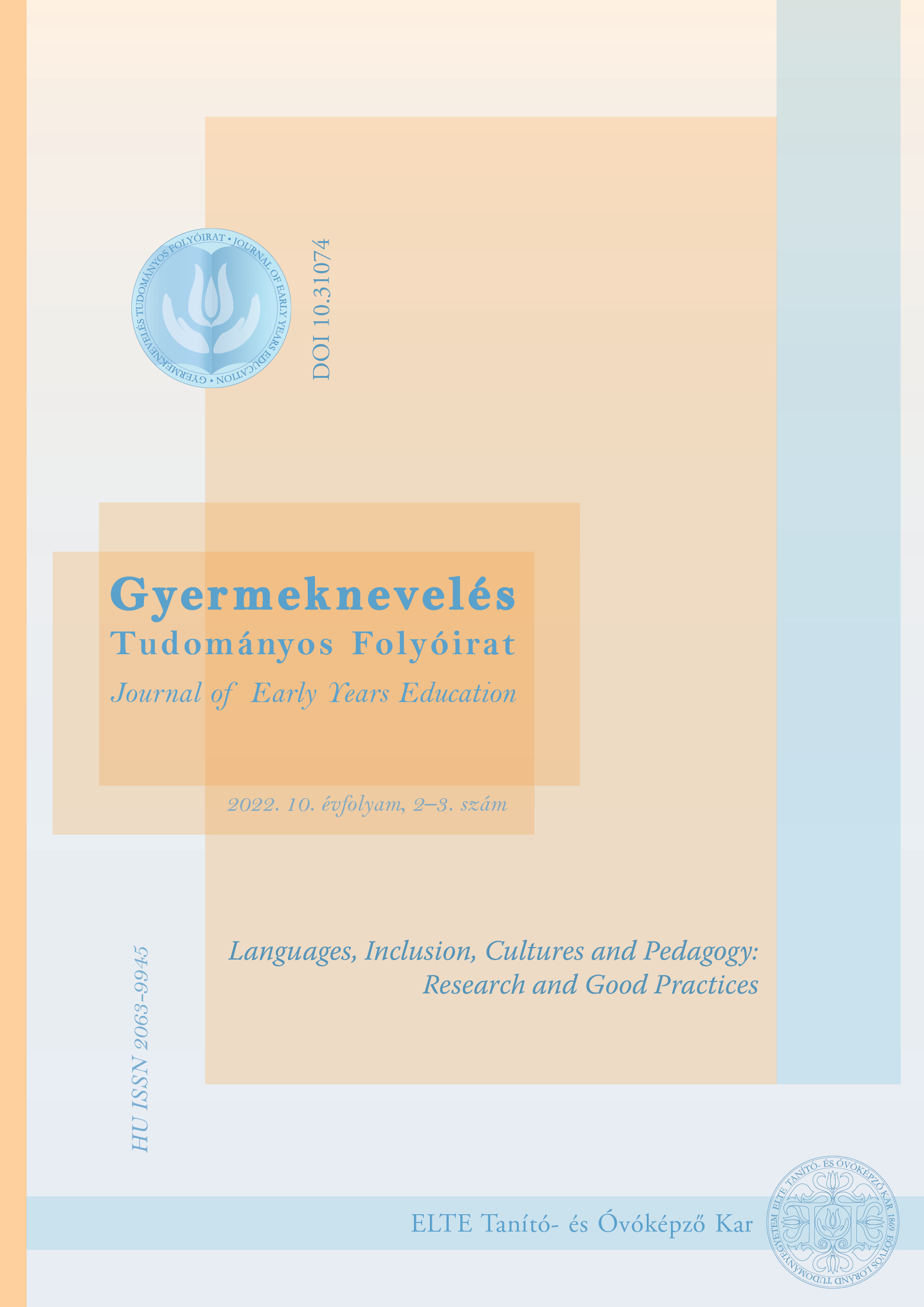On creating a framework for teaching children’s literature in ELTE TÓK’s international pre-school programme
DOI:
https://doi.org/10.31074/gyntf.2022.2.253.267Kulcsszavak:
teacher training, pre-school, course design, children’s literature, international course, interculturalityAbsztrakt
This study discusses pre-school teacher training of an exceptional kind in Hungary while additionally providing an overview of the underlying situation. In the light of current thinking in teacher education with a special focus on teaching literature for undergraduate students, a framework for the children’s literature course shall be introduced. The proposed framework takes the course requirements into consideration adapts the course material to the background knowledge and future needs of the English language Pre-School Education Programme students. Such a course had not existed earlier. The operative course documents and requirements had exclusively been written in Hungarian and specifically designed for the Hungarian Pre-School Education Programme students and context.
Letöltések
Hivatkozások
Boldizsár, I. (2019). Meseterápia. Mesék a gyógyításban és a mindennapokban. Magvető.
Drew, C. (2019). Bruner’s Spiral Curriculum-The 3 Key Principles. Unpublished PhD dissertation.
Ewers, H-H. (2012). Fundamental Concepts of Children’s Literature Research. Routledge.
Harris, J. & Leung, M. (2006).The Use of Children’s Literature in the English Primary Classroom. In Falvey, P. & Kennedy, P. (Eds.), Learning Language Through Literature. A Sourcebook for Teachers of English in Hong Kong. Hong Kong University Press. https://hkupress.hku.hk/image/catalog/pdf-preview/9789622094956.pdf
Glazer, J. I. (1986). Literature for Young Children (pp. 2-8). Charles E. Merrill Publishing Company.
Grenby, M. O. & Immel, A. (2013). Children’s Literature. Cambridge University Press.
Hunt, P. (1994). An Introduction to Children’s Literature. Oxford University Press.
Kovács, J. & Trenntinné Benkő, É. (2008). A Task-Based Reader on Methodology and Children’s Literature for English Language Teachers of Young Learners. Okker Kiadó Kft.
Nodelman, P. (2008). The Hidden Adult: Defining Children’s Literature. The Johns Hopkins University Press.
Pearson, L. (2011). Children’s Literature. Pearson.
Schneider, J. J. (2016). What is Children’s Literature? In Schneider J. J. The Inside, and Upside Down of Children’s Literature: From Poets and Pop-ups to Princess and Porridge (pp. 9–27). University of South Florida. https://doi.org/10.5038/9780977674411.ch2
Swales, J. M. (1990). Genre Analysis:English in academic and research settings. Cambridge University Press
Tomlinson, C. A. (2017/2018). ’One to Grow On/The Iceberg Theory of Teaching’. Educational Leadership - Mental Health in Schools, 75(4), 88–89.
##submission.additionalFiles##
Megjelent
Hogyan kell idézni
Folyóiratszám
Rovat
License
Copyright (c) 2022 Szerző

This work is licensed under a Creative Commons Attribution-NonCommercial-ShareAlike 4.0 International License.

